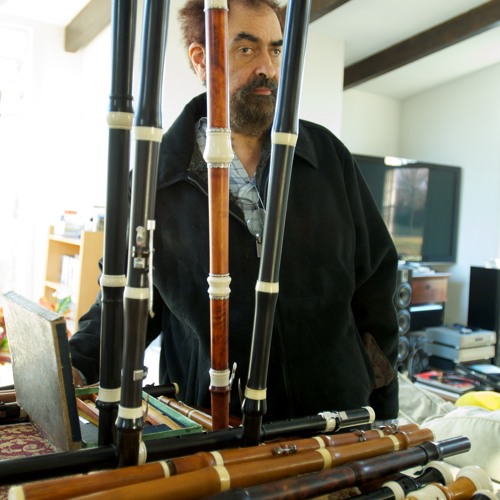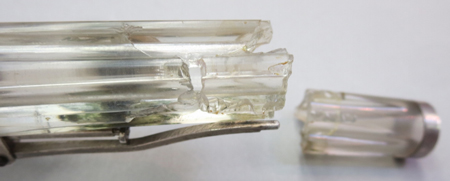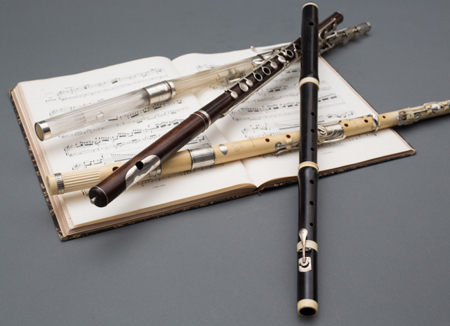by Daniel Hathaway

The idea came to him when he acquired a crystal flute made by Claude Laurent in Paris in 1821. Among the most expensive flutes on the market at that time, these instruments were priced well out of the reach of mere musicians and were frequently given as gifts by the wealthy (among their owners were James Madison and Napoleon Bonaparte). Some 120 of these flutes still exist.
Unfortunately, Lynn’s crystal flute was severely damaged, its foot broken in two pieces. He set out to have it repaired, first looking online for glass restorers. Then it occurred to him that an art restoration workshop was the logical place to turn, and the McKay Lodge Laboratory was only four miles away from the Conservatory. Robert Lodge and Dee Pipik took on the challenge (other repairs were made by Joe Cornia of California).

Once his crystal flute had been repaired, Lynn decided to curate a concert that would pay homage to “the people that make it possible for these flutes to sing again — my restorers.” In addition to Lodge, Pipik, and Cornia, that list includes Boaz Berney (Québec), Kelly Roudabush (North Carolina), Jem Hammond (Wales), Matt Slauson (New York), Tim Burdick (Ohio), Gary Lewis (California), Jeff Denning (Maryland), Jerry Shurr (Pennsylvania), and Arthur Haswell (England).

Here’s the playlist, along with the historic flutes on which the pieces will be performed:
Charles Cottignies’ Ma Normandie on a 4-key Denis Buffet made in Paris ca. 1810
Contad Berens’ Potpourri from Die Zauberflöte on an 8-key S. Koch instrument made in Vienna, ca. 1830
C.P.E. Bach’s Duet in e for flute and violin on a 1-key Crone made in Leipzig ca. 1770
L.A. Carpentras’ and T. Berbiguier’s Nocturnes Concertans for guitar and flute on a conical Boehm made by Louis Lot in Paris ca. 1900
Gaspard Kummer’s Variations for flute and guitar on a 5-key Bodfroy made in Paris ca. 1835
Turlough O’Carolan’s Irish Airs from The Hibernian Muse on a 1-key Meacham made in New York ca. 1808 and a Kusder London flute in F, ca. 1780
Cottignies’ “Fantaisie” from Rossini’s Gustave on a conical Boehm by Buffet the younger made in Paris in 1829
Berbiguier’s “Rondo” from Sonata III on the crystal 8-key made by Laurent in Paris in 1821 and an ivory 9-key by Monzani made in London in 1822
François Devienne’s Quator III on a 1-key Noe Freres made in Paris ca. 1810
Lynn, who has presented similar lecture-demonstration recitals in Romania, Italy, and Portugal, admits that showcasing ten different instruments is not an easy task. “One difficulty of performing on different instruments is that, depending on the time and country in which they were made, they’re tuned at different pitches. In this program, that ranges from A=424 hz. to A=448, and that does affect how you hear tone quality.”
After the performance, Lynn’s flutes will be available for inspection outside Kulas Hall in the Conservatory Lounge, where materials from Oberlin’s Selch Collection — music, instruments, and ephemera — will also be on display.
Published on ClevelandClassical.com May 16, 2017.
Click here for a printable copy of this article



